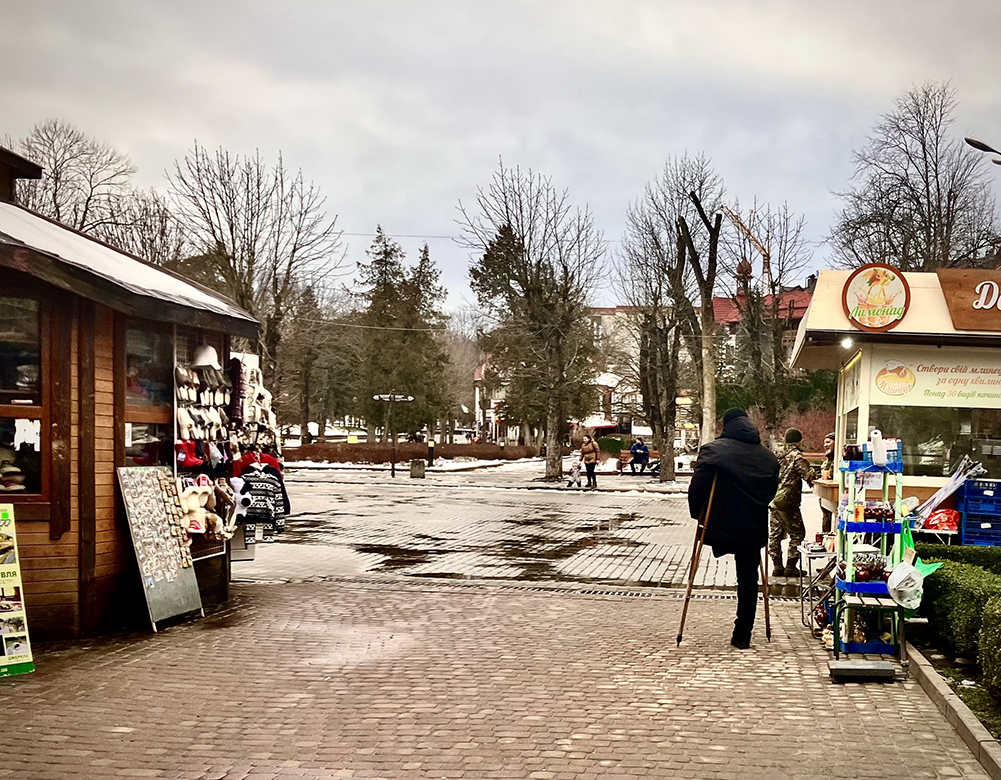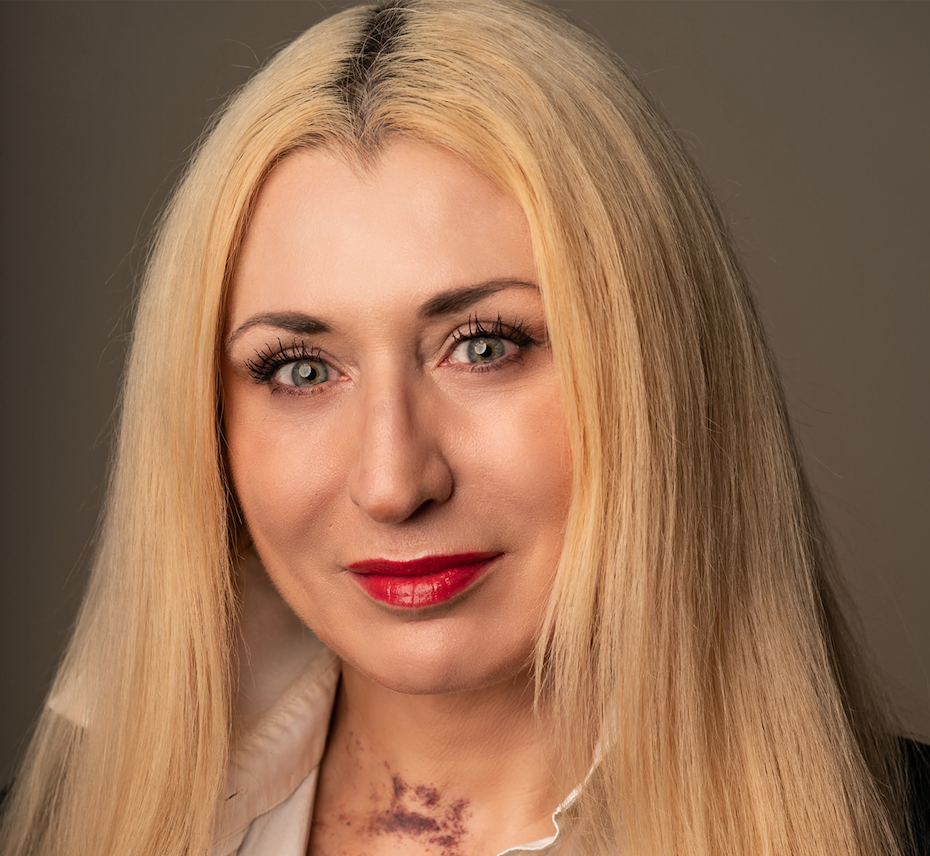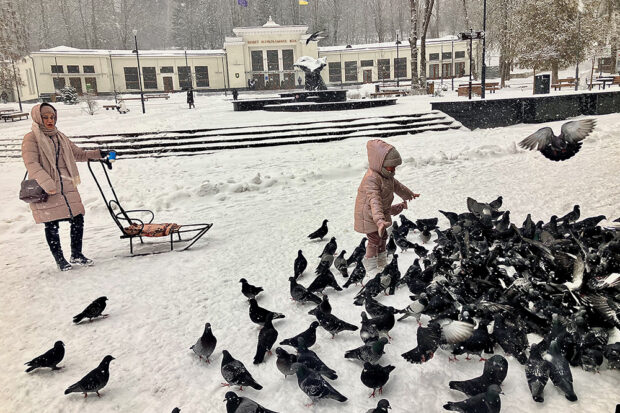
Truskavets, a picturesque city 84 kilometers south of Lviv in Western Ukraine, is one of Europe’s oldest balneological resorts, offering unique mineral springs and a healing climate. Located in an ecologically clean zone of the Carpathians at an altitude of 350–400 meters above sea level, the spa town is surrounded by coniferous forests. About 70 health and recreation facilities welcomed more than 200,000 people a year before the Russian full-scale invasion in 2022.
Truskavets is celebrated for its charm, with streets lined with wooden villas built in Art Nouveau style with elements of Swiss and German chalet and Ukrainian folk architecture. Church of the Assumption of the Blessed Virgin Mary downtown, built in 1859 in neo-Gothic style, houses a 1915 organ.
Truskavets Central Park resembles a dense forest with its rich flora, fauna, sculptures and fountains. The peaceful appearance is deceptive: Truskavets’ past is intricately woven into the fabric of Ukrainian history and its turbulent history reflects the Ukrainian struggle for independence.
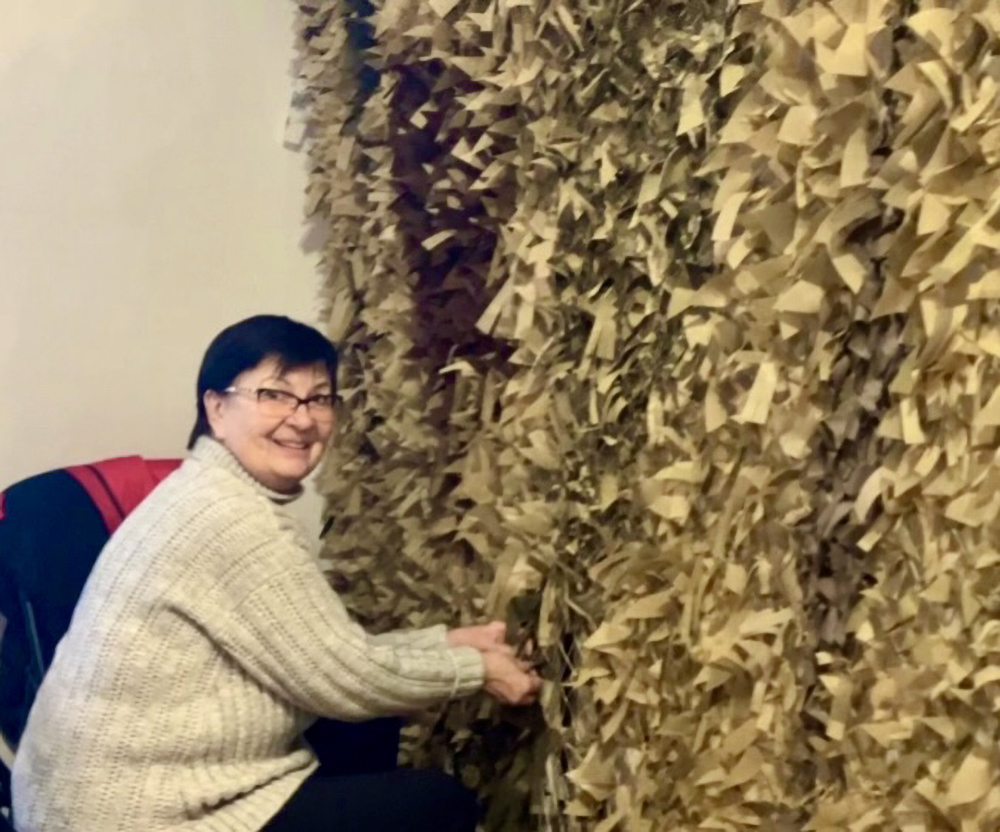
From Ancient Times to Modernity
The area likely served as a battleground between the Goths, Transcarpathian tribes led by the Carpi, and the legions of the Roman Empire. Archaeological findings, including a Roman battle pickaxe, date back to the 4th century AD.
In the 10th and 11th centuries, the territory of modern Truskavets was part of Kyivan Rus, the first Slavic state, and after the dissolution of this medieval political federation, it belonged to the Galician and Galician-Volhynian principalities. Under Polish rule in the 14th century, the city became the property of the nobility.
In the late 1770s, after three divisions of the Polish-Lithuanian Commonwealth between Austria and Prussia, Galicia integrated into the Austro-Hungarian Empire. The Galician village of Truskavets became a state estate of the Austrian treasury.
The mountain village had fairly fertile soil and about 990 residents engaged in agriculture, cattle breeding, forestry and salt mining. Villagers worked in the orchards, hayfields and abundant gardens. In 1784, the Austrian government established a state monopoly on salt production, leading to the closure of the salt industry in Truskavets.
At the end of the 18th century and the beginning of the 19th century, Truskavets and its surroundings became the center of the Great Boryslav-Drohobych oil basin. During further geological exploration and prospecting for minerals, miners came across sources of salty sulfur water, which residents have long used for various health needs. Mineral water Naftusya, with its characteristic oil scent, turned out to be effective for many ailments, including gout and kidney diseases.
In 1827, the first bathing facilities were built in Truskavets. The town quickly transformed into a renowned European resort, comparable to Vichy, Baden-Baden and Karlovy Vary.
The 20th century brought seismic shifts. In 1919, Polish forces occupied Galicia. By the 1930s, Truskavets was part of the Second Polish Republic and home to 1,700 Ukrainians, 300 Poles and more than 200 Jews.
Soviet-Nazi Pact

In 1939, following the signing of the Nazi-Soviet secret protocol outlining the spheres of influence in Europe, Western Ukraine territories were annexed by the Soviet Union. On Aug. 23, 1939, in Moscow, Soviet dictator Joseph Stalin, Soviet Foreign Minister Vyacheslav Molotov and Minister of Foreign Affairs of Nazi Germany Joachim Ribbentrop signed a nonaggression pact, dividing up the territories of Poland, Romania, the Baltic countries and Finland between the Soviet Union and Nazi Germany.
On signing the pact, known as Molotov-Ribbentrop, Stalin raised his glass to Hitler and said a toast. Immediately after the pact, Soviet propaganda banned the term “fascist” and anti-Hitler propaganda.
Nazi Germany initially occupied Western Ukraine on Sept. 15, 1939, violating the Pact’s secret protocols. On Sept. 25, 1939, the area was transferred to the Soviet Union. The Soviet occupation lasted from September 1939 to June 1941. Deportations, arrests and the expropriation of businesses and property followed.
On June 22, 1941, Nazi Germany broke the pact and invaded the Soviet Union. By July 4, 1941, the Nazis occupied Truskavets again and the residents faced mass arrests and forced labor. The Jewish population faced ghettoization and mass executions.
When the Soviet forces reentered Truskavets in August 1944, mass collectivization resumed, and in 1945 a collective farm was established. Dissenters or individuals accused of connections with the underground faced deportations to Siberia and other remote regions of the Soviet Union. Apartments of dissenters were occupied by new arrivals.
After the war, Truskavets regained its status as one of the leading health resorts in the Soviet Union.
As Ukraine gained independence in 1991, Truskavets continued thriving. In 1999, it was recognized as the best resort center in Ukraine.
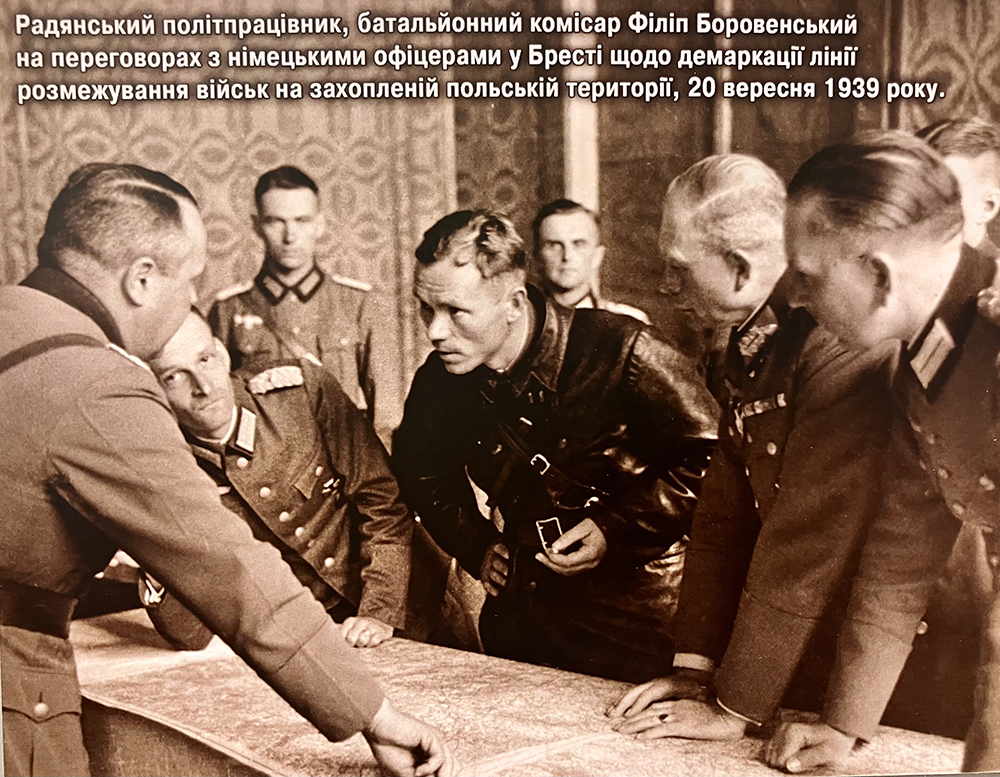
Flipping Narratives
In the Russian Federation, the historical narratives are flipped to support the war of aggression. In 2009, Putin condemned the Molotov-Ribbentrop Pact, labeling it a “collusion” and deeming attempts to pacify Nazis through agreements as morally unacceptable and politically harmful.
The narrative shifted in 2015 after the Russian annexation of Crimea. Amid Western sanctions, the Kremlin increasingly glorified Stalin and his pact with Nazi Germany. Putin defended the Molotov-Ribbentrop Pact, questioning its perceived negativity, arguing that if the Soviet Union did not want war, there was nothing inherently wrong with the treaty. Following this speech, Russia’s Culture Minister, Vladimir Medinsky, praised the Molotov-Ribbentrop Pact as a “colossal achievement of Stalin’s diplomacy.”
Putin’s praise of the pact with Hitler stands in stark irony to his claim of a “special military operation” in Ukraine for “denazification.” This rebranding of the Molotov-Ribbentrop Pact, once condemned for its moral reprehensibility, emphasizes the absurdity of “denazification” motives. As the Russian full-scale invasion of Ukraine approaches the second year, Truskavets suffers the consequences.

Life during the Russian Full-Scale Invasion
During the two years of the full-scale aggression, Truskavets, now home to about 30,000, did not suffer directly as much as the eastern and southern regions of Ukraine. Yet, the war is palpable here. Many men left to fight and the military funeral became a part of life.
Andriy, a Ukrainian soldier, back in Truskavets for rehabilitation, believes that soon more men will have to join the army.
Iryna, a pharmacy owner and a mother of three, does not get news from her husband fighting in Donbas for weeks. For weeks after he left for the front, she kept his slippers in the hallway and told the children that their father was working around the clock.
The resort became a home for thousands of internally displaced persons. Civilians are engaged in volunteering activities, particularly in making camouflage nets for the military. Buying the fabric and materials, dozens of volunteers gather in gothic villas to weave snow-white and grass-green nets from rags and burlap, to cover vehicles and weapons and camouflage suits for Ukrainian soldiers. Various charities are collecting money for drones and vehicles for the army.
Thus, Truskavets grapples with the consequences of the ongoing Russian invasion, weaving contemporary tragedy into its history.
*****
Zarina Zabrisky is an American journalist and an award-winning novelist currently reporting on the Russian war in Ukraine. She is a war correspondent for Bywire News (UK); writes a Daily Review column for Euromaidan Press, an online Ukrainian English-language independent newspaper since 2014; and contributes articles and podcasts on information warfare, reports from the sites and interviews military experts and eyewitnesses for these and other publications, including The Byline Times (UK).
